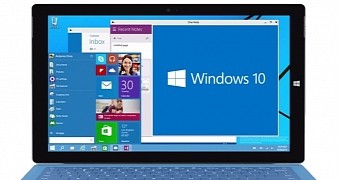Windows 10 is definitely going to be a major game changer for Microsoft, so the Redmond-based tech giant has pretty huge expectations from the new operating system. But how huge?
Terry Myerson, head of the OS unit at Microsoft, offered us the answer at BUILD 2015: 1 billion devices running Windows 10 would arrive on the market in the next two or three years, he said.
That’s an ambitious goal and many believe that Microsoft’s executives are dreaming with their eyes wide open, but it might seem like putting Windows 10 on 1 billion devices across the world is not such a big deal. At least, not according to some estimates made by Microsoft analysts.
It can be done
Patrick Moorhead, president and principal analyst at Moor Insights & Strategy, said in a statement for Benzinga that approximately half of the 300 million PCs that are sold each year would be running Windows 10 because of the partnership that Microsoft has with OEMs, so in just three years, the company should be able to bring to the market no less than 450 million PCs.
Another 225 million would come from the commercial market in the next three years, the analyst estimated, so Windows 10 should be running on no less than 675 million PCs until 2018.
“Let's just say of all the billion installed base, only 20 percent upgrade to Windows 10. That becomes 200 million. That's 875 million. [Now] I've got to find another 125 million units over 1-2 years on Windows Phones and tablets,” he pointed out.
And these estimates do make sense. Microsoft said that there are 1.5 billion Windows PCs out there, and statistics show that 50 percent are running Windows 7, whereas some 10 percent have been upgraded to Windows 8.1. Windows 10 will be free of these PCs, and the company expects at least 50 percent of these users to deploy the new OS when it becomes available.
What’s more, Microsoft has decided to go for an approach that would convince users to upgrade to Windows 10 in the shortest time possible, as the new OS would be free only one year after availability. If customers do not upgrade during this timeframe, they might have to purchase the upgrade once the promo is over.

 14 DAY TRIAL //
14 DAY TRIAL //